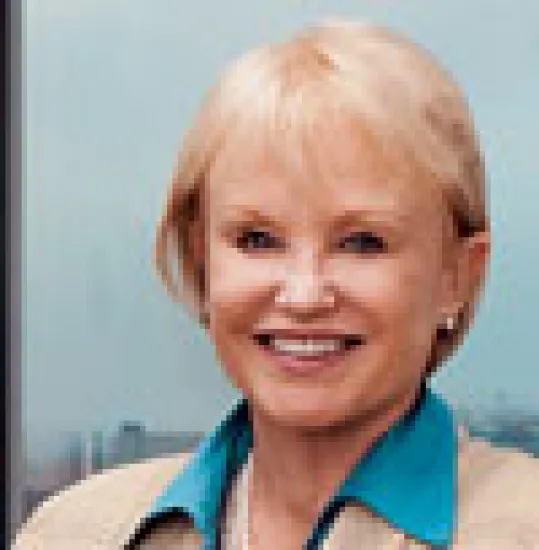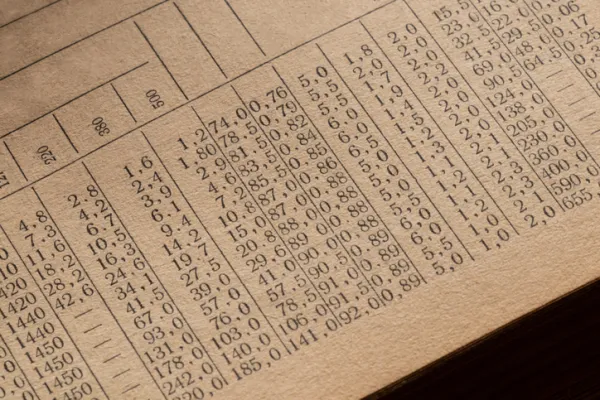During a period that has seen the worst stock market performance since the Great Depression, value managers should have found pickings galore. Instead, some of the most revered names in value investing — such as Bill Miller of Legg Mason Value Trust, Martin Whitman of Third Avenue Management and former AllianceBernstein CEO Lewis Sanders — stumbled headlong into a massive value trap over the past year and a half. Many of these investors piled into seemingly cheap financial stocks, only to see those shares get hammered rather than rebound smartly, as they had in previous downturns.
Not all value managers have suffered big losses, though. A handful of small and relatively obscure value shops have succeeded in delivering superior performance during the bear market. Some of them moved heavily into cash or into shares of companies with strong cash flows. Others placed big bets on businesses that tend to do well during recessions, such as low-end retailers. And these managers deftly sidestepped disaster, steering clear of the financial stocks whose implosion hurt other value investors.
“For the past year and a half, our analysis has been the analysis of survival,” says Susan Byrne, chairman and CIO of Westwood Holdings Group, in Dallas, Texas.
After founding Westwood in 1983, Byrne developed a strategy that focuses on free cash flow. The method proved its worth in late 2007, when Byrne and Mark Freeman, co-managers of the $81 million WHG Income Opportunity Fund, surmised that the subprime mortgage crisis would lead to a credit crunch. That view prompted them to put more emphasis on corporate debt levels, enabling them to weed out companies that would not have enough cash to finance themselves if they couldn’t borrow. Although Byrne was tempted to buy Fannie Mae in late 2007, she was swayed by Freeman’s argument that Fannie was too highly leveraged, with assets 30 times its capital. The fund also steered clear of Bear Stearns Cos. and Lehman Brothers Holdings before their collapses, despite the seemingly attractive prices. “We have an absence of the real torpedo stocks,” says Byrne.
Instead, she moved Income Opportunity into stocks like U.S. Smokeless Tobacco Co., whose shares rose 24 percent last year. The company was acquired by Altria Group in January for $11.7 billion. Income Opportunity didn’t entirely escape the wider financial turmoil. The fund fell by 6.8 percent in the 15 months ended March 31. But that performance compares with a drop of 50.6 percent in the large-cap Russell 1000 value index and was better than 95 percent of comparable mutual funds, according to Morningstar, the Chicago-based research firm that tracks mutual funds.
Recently, Byrne and Freeman have been looking for hedges against a possible resurgence of inflation. As of March 31 their fund had about 10 percent of its assets in U.S. Treasuries and 10 percent in Treasury Inflation-Protected Securities; a year ago the allocation to Treasuries was 25 percent. The two investors have also focused on companies that pay dividends and have recession-resistant earnings. They bought McDonald’s Corp. in late February at $50 a share, or 13 times estimated 2009 earnings, down from a multiple of nearly 30 in April 2008. The stock was trading at $54.41 late last month.
Steven Romick, portfolio manager of First Pacific Advisors’ Crescent Fund, a $1.2 billion, large-cap value fund, increased his portfolio’s already-high cash level to 39.9 percent from 35.8 percent during 2008. Believing that bank stocks were overpriced and the banking system was technically insolvent, he also shorted financial stocks, including Barclays, which he sold short at $36.19 in the second quarter of 2008 and covered at $20.05 in the third quarter, and Lehman Brothers, which he shorted in multiple transactions at prices averaging $56.51 a share between November 2007 and April 2008 and covered at an average price of $22.47 by July 2008. “We didn’t take them all the way to the bottom, but we made money off of them,” says Romick.
Although Crescent fell 18.45 percent between the end of 2007 and the end of March 2009, it beat its benchmark, the Russell 1000 value index, by 32.2 percentage points over the period and outperformed 94 percent of its peers, according to Morningstar.
Now Romick says he is lowering the fund’s cash allocation and buying distressed debt. In November 2008 the portfolio manager bought bonds backed by aircraft leases from Los Angeles–based International Lease Finance Corp. that mature in 2010 and yield 23 percent, and mortgage-backed securities from American General Finance Corp. in Evansville, Indiana, maturing in 2011 and yielding 42 percent. Both issuers are subsidiaries of the troubled insurer American International Group, which explains the stratospheric yields, but Romick notes that the entities are not directly controlled by the government and believes they will survive independently. The two positions make up 3.6 percent of Crescent’s portfolio. “They were trading at sizable discounts to what we view as their value,” he says. “In both cases, we believe the debt will be worth par.”
Brad Evans, 37, saw his $577 million-in-assets Heartland Value Plus Fund rank in the bottom quartile among its peers every year from 2003 to 2007. But the Milwaukee-based manager resisted the temptation to tinker with his investment process last year and instead continued to do what he does best — look for good companies that are misunderstood because they are in troubled industries. Although many investors were shying away from insurance brokers in the belief that higher premiums would prompt companies to buy less insurance, Evans was happy to boost his exposure, noting that brokers usually make more money when rates go up even if the insurers themselves don’t. In March 2008 he bought Richmond, Virginia–based Hilb Rogal & Hobbs Co., an insurance broker that had fallen 59 percent since the previous October, for $29 a share and then sold it for $46 at the end of September, taking a 59 percent profit. “It’s about maintaining the discipline necessary to know when to let go of something you like,” says Evans. A few days later London-based insurance broker Willis Holdings acquired HRH for $2.1 billion in a cash-and-share deal that valued the company’s stock at $46.
So far this year Evans has been increasing the fund’s underweight exposure to financial services, buying more insurance brokers as well as asset management firms. He has also been purchasing the shares of health care companies that make medical devices, which he considers a defensive play regardless of the shape of the economy, and oil and gas companies because their prices have fallen significantly. Value Plus fell 22.6 percent in the 15 months ended March 31, which was better than 98 percent of small-cap value funds, according to Morningstar.
Eric Cinnamond, a portfolio manager at Intrepid Capital Management in Jacksonville, Florida, began 2008 with more than 20 percent of the Intrepid Small Cap Fund’s assets in cash. He used that war chest to pounce on recession-proof stocks. “In the beginning of 2008, everyone hated retailers,” he notes. But Cinnamond bought shares of Family Dollar Stores, which had fallen 79 percent from the previous June, for $17 in January 2008 and sold them for $24 in July 2008, a gain of 41 percent. “In a recession the middle class starts shopping at Family Dollar, and their same-store sales go up,” he explains.
As a result of trades like that, Intrepid Small Cap lost only 10.1 percent in the 15 months ended March 31, outperforming 99 percent of its peers, according to Morningstar. The fund ended the year with $47 million in assets (Intrepid manages an additional $20 million in institutional accounts using the same strategy).
At the end of March, Intrepid Small Cap had 14 percent of its assets in cash, which Cinnamond is investing in manufacturers he considers oversold. On March 10 he bought shares of Waters Corp., which makes analytical devices that pharmaceuticals firms use for R&D, at $33. Waters had fallen 53 percent during the previous four months on fears that Pfizer’s acquisition of Wyeth would prompt a cutback in R&D at the world’s largest pharmaceuticals firm, but Cinnamond wagered that the new entity, and big pharma in general, would step up R&D during the recession to position itself for an eventual recovery. The stock was trading at $38.51 late last month, up 17 percent since Cinnamond’s purchase.
“The rationale is to buy assets at a discount,” he says. “I am able to find so many great operating businesses that I can evaluate with a high degree of confidence.”
Tom Forester, founder of Forester Capital Management in Chicago, anticipated the fallout from the collapsing housing bubble. Early last year he reduced financials holdings to just 5 percent of his fund, compared with the sector’s 20 percent weighting in the Standard & Poor’s 500 index, while holding for the full year Wal-Mart Stores and McDonald’s, the only two stocks in the Dow Jones industrial average that rose during 2008. Those picks helped Forester distinguish itself by being the sole long-only equity mutual fund in the U.S. to gain in 2008, albeit by a mere 39 basis points. Forester also loaded up on health care stocks, believing them to be oversold on investor fears that a Democratic win in last year’s election would lead to health care reform. In March 2008 he bought Bristol-Myers Squibb Co. at $20 a share after the stock had fallen 31 percent in the previous four months. The shares were up 13 percent at the end of the year but by late last month had retreated to $20.55.
“We had a good year, but it felt like it was four years of hard work last year,” says Forester, 50, who worked as an analyst and portfolio manager at half a dozen firms before starting his own fund with the regulatory minimum of $100,000 in September 1999. The Forester Fund, which boasts $70 million in assets, was down 6.9 percent in the 15 months ended March 31, better than 99 percent of large-cap value funds.
Lately, Forester has been growing optimistic that the economy will recover in the second half, so he is paring the fund’s weighting in health care stocks — to 18.4 percent of assets at March 31, from 21 percent at the end of 2008 — and increasing holdings of technology stocks, traditionally a growth rather than value play, to 10.2 percent from 7 percent. On March 12 he bought Hewlett-Packard Co. at $29 a share, or seven times estimated 2009 earnings, compared with the average multiple of about 14 times earnings for the S&P 500. HP had fallen by 40 percent over the previous six months on fears about the fallout from the recession. The stock had rebounded 22 percent, to $35.47, by late last month.
“We are getting a little more aggressive this year and buying holdings that might have more upside to them as the economy starts turning around,” Forester says. Such a recovery would really give value managers something to cheer about.






